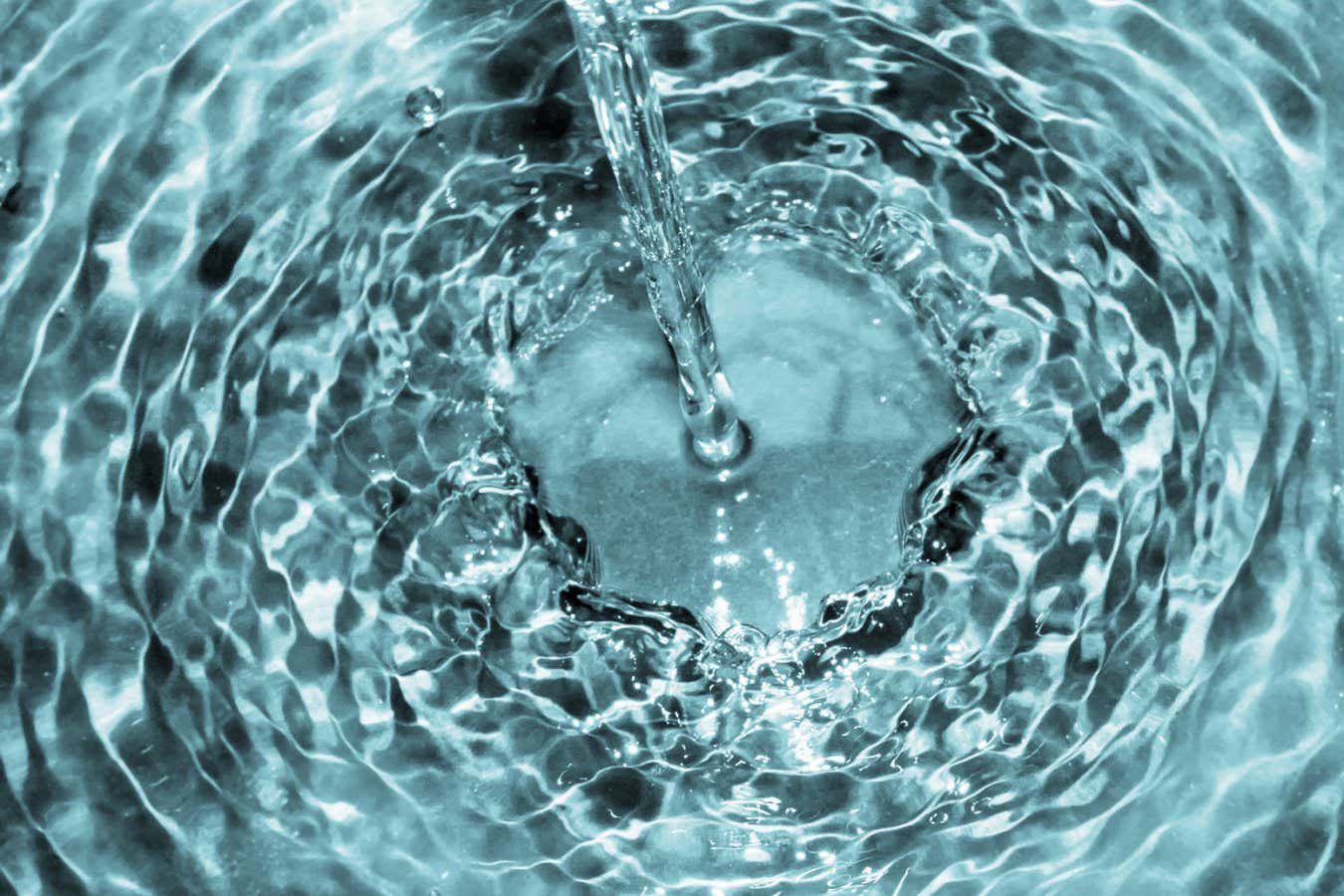
A hydraulic jump occurs when fast and slow-moving water meet at a boundary
durk gardenier / Alamy
For the first time, researchers have pushed electrons to flow so fast they went supersonic, creating a shockwave.
The currents of electricity flowing through our devices share a name with river currents, but they are actually rather different. When electrons flow through materials they bump into atoms, while water droplets in rivers mostly collide with each other. Even so, in 2016 researchers managed to make electrons flow like a viscous liquid within the extremely thin carbon material graphene. Now, Cory Dean at Columbia University in New York and his colleagues got electrons within graphene to do something very different – the particles flowed so quickly they executed a hydraulic jump.
You might encounter a hydraulic jump when you are doing the dishes. When you run a faucet, the messy ring-shaped boundary separating fast and slow-moving water that forms in the sink beneath it is just that. “In certain ways, it’s like a sonic boom going on in your kitchen sink,” says Doug Natelson at Rice University in Texas, who was not part of the experiment.
Engineering the electron version was less simple. The researchers created a microscopic nozzle from two layers of graphene to form a version of the “de Laval nozzle”, which was conceived in the 19th century and is commonly used in rocket engine designs. It is a tube that is pinched in the middle in such a way that if a liquid reaches supersonic speed within the constriction, it continues to accelerate instead of slowing down as it exits. This culminates in the fluid forming a shockwave.
But the researchers had to find a way to detect that hydraulic jump, which had never been observed with electrons before. Team member Abhay Pasupathy, also at Columbia University, says instead of measuring the electron current flow between two ends of the device, as is common, they adapted a type of microscope to map the voltage of the electrons at many different points across the nozzle.
Natelson says there is art and finesse to making graphene structures pristine enough for electrons to be really “cheek by jowl” – that is, squeezing them close enough to enter this more dramatic regime. Given the graphene nozzle was microscopically small, it is also technically impressive the team could resolve the jump, says Thomas Schmidt at the University of Luxembourg.
Now that they know how to get electrons to flow this rapidly, the researchers have a chance to answer some long-standing questions about electrically-charged shockwaves. Dean says it is a matter of ongoing debate whether the hydraulic jump is accompanied by an emission of radiation that could possibly be used to build new generators for infrared and radio waves. “Every experimentalist that we discuss this with is thinking about ways that you can detect this emission. Every theorist says there’s no way it’s going to emit anything. There’s a question there about what’s actually happening,” he says.
Topics:
- electricity/
- fluid dynamics
Source link : https://www.newscientist.com/article/2499035-electrons-inside-graphene-have-been-pushed-to-supersonic-speeds/?utm_campaign=RSS%7CNSNS&utm_source=NSNS&utm_medium=RSS&utm_content=home
Author :
Publish date : 2025-10-08 18:18:00
Copyright for syndicated content belongs to the linked Source.



